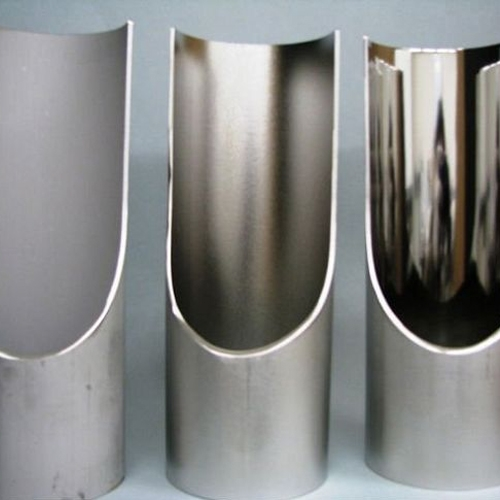There is oil in stainless steel sanitary pipes after they are finished, and they need to be processed and dried before subsequent processes can be carried out.
1. One is to pour the degreaser directly into the pool, then add water and soak it. After 12 hours, you can clean it directly.
2. Another cleaning process is to put the stainless steel sanitary pipe into diesel oil, soak it for 6 hours, then put it into a pool with cleaning agent, soak it for 6 hours, and then clean it.
The second process has obvious advantages. It is cleaner to clean stainless steel sanitary pipes.
If the oil removal is not very clean, it will have a very obvious impact on the subsequent polishing process and vacuum annealing process. If the oil removal is not clean, first of all, the polishing will be difficult to clean and the polishing will not be bright.
Secondly, after the brightness fades, the product will easily peel, which cannot guarantee a high-quality product.
Stainless steel precision pipe straightness requires straightening
Bright appearance, smooth inner hole:
Finish-rolled sanitary stainless steel pipe internal and external surface roughness Ra≤0.8μm
The surface roughness of the inner and outer surfaces of the polished tube can reach Ra≤0.4μm (such as mirror surface)
Generally speaking, the main equipment for rough polishing of sanitary stainless steel pipes is the polishing head, because the roughness of the polishing head determines the order of rough polishing.
BA: Bright Annealing. During the drawing process of the steel pipe, it will definitely need grease lubrication, and the grains will also be deformed due to processing. In order to prevent this grease from remaining in the steel pipe, in addition to cleaning the steel pipe, you can also use argon gas as the atmosphere in the furnace during high-temperature annealing to eliminate deformation, and further clean the steel pipe by combining argon with the carbon and oxygen on the surface of the steel pipe to burn. The surface produces a bright effect, so this method of using pure argon annealing to heat and quickly cool the bright surface is called glow annealing. Although using this method to brighten the surface can ensure that the steel pipe is fully clean, without any any external contamination. However, the brightness of this surface will feel like a matte surface if compared with other polishing methods (mechanical, chemical, electrolytic). Of course, the effect is also related to the content of argon and the number of times of heating.
EP: electrolytic polishing (Electro Polishing), electrolytic polishing is the use of anode treatment, using the principle of electrochemistry to appropriately adjust the voltage, current, acid composition, and polishing time, not only making the surface bright and smooth , the cleaning effect can also improve the corrosion resistance of the surface, so it is the best method to brighten the surface. Of course, its cost and technology also increase. However, because electrolytic polishing will highlight the original state of the steel pipe surface, if there are serious scratches, holes, slag inclusions, precipitates, etc. on the steel pipe surface, it may cause electrolysis failure. The difference from chemical polishing is that although it is also carried out in an acidic environment, not only will there be no grain boundary corrosion on the surface of the steel pipe, but the thickness of the chromium oxide film on the surface can also be controlled to achieve the best corrosion resistance of the steel pipe.
Post time: Jan-23-2024


